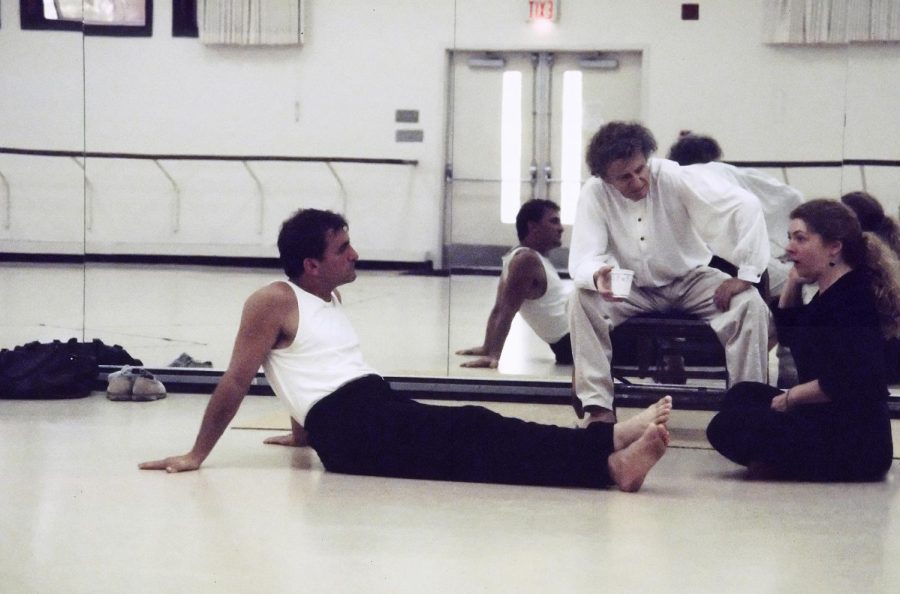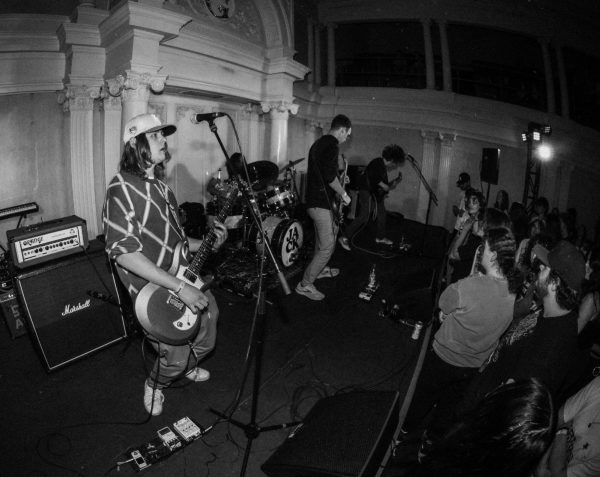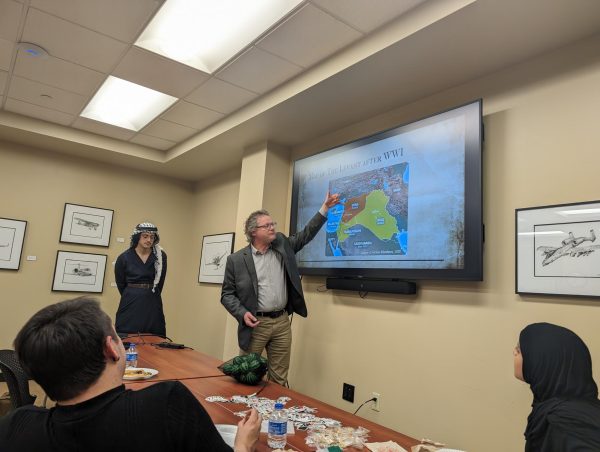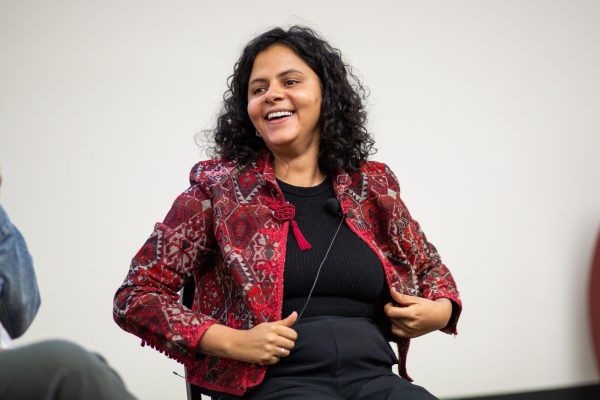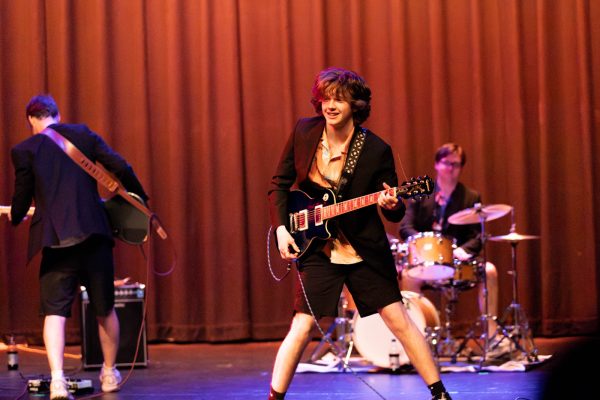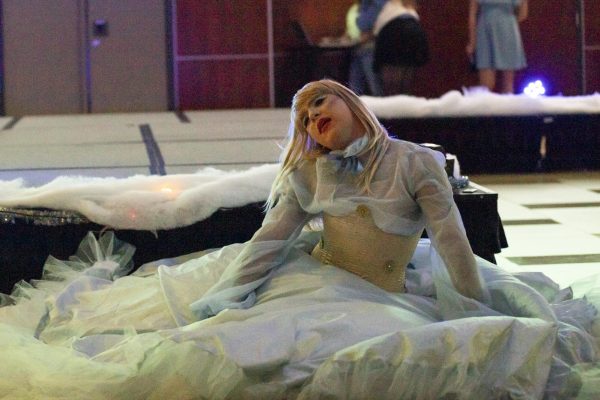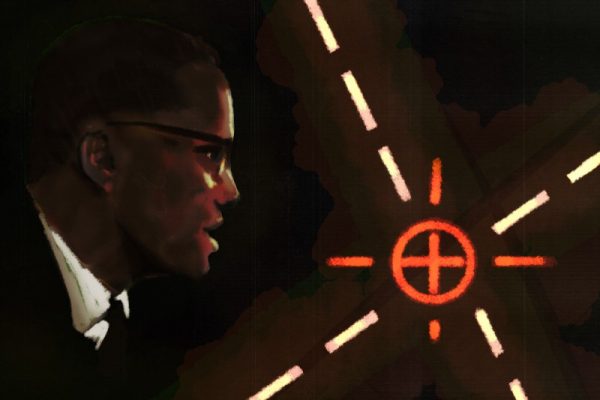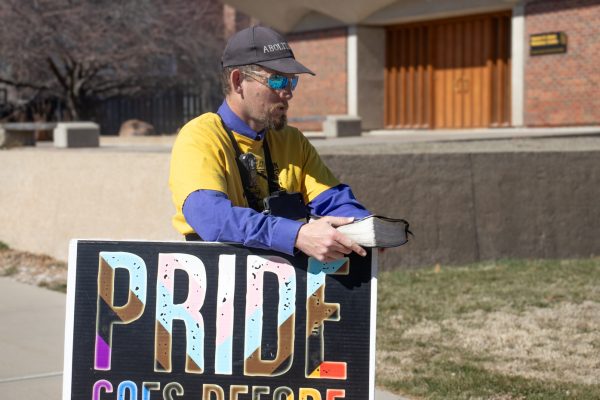‘I fell in love:’ Dance professor shares his journey with mime theater
Johnson (left) trained with Marceau (middle) before developing a deep friendship.
In 1972, Professor of Dance Nicholas Johnson saw a man with a face coated in white paint at the University of Arizona copying people’s walks. The man produced a balloon from his pocket and, after blowing it up, mimicked his body to perfectly deflate in timing with the balloon. Johnson was both confused and in awe.
“I thought, ‘Oh my god,’” Johnson said. “I wanna do that. I wanna know what that is.”
Three years later, when Johnson was finishing with a degree in psychology, English and education at the University of Utah, he saw a poster advertising what he had seen in Arizona, something that changed the course of his life: mime theater. He had already been taking dance classes, but soon started exploring mime theater courses.
“I fell in love with the mime,” he said.
As a child, Johnson never thought his life would follow this path. He did not begin dancing until his early 20s. His parents were shocked at his sudden interest in theatrical pursuits.
“Some very good friends of theirs were Marc [Breaux] and Dee Dee [Wood],” Johnson said.
A husband-and-wife duo, Breaux and Wood worked together on many projects, such as “Mary Poppins” and “The Sound of Music.”
“While my parents were angry with me – they wanted me to go to law school or banking or something smart and practical – Marc and Dee Dee would walk by me and whisper ‘Do what you love.’”
“That was the solution,” Johnson said. “Just do what you love.”
The man who Johnson saw on the poster in Utah was Gregg Goldston. Goldstein opened a mime school at Kenyon College, about an hour outside of Columbus. Alongside Goldston, Johnson opened a company called The Invisible People Mime Theater.
“[Goldston] always loved [Marcel] Marceau, and I hadn’t seen him yet,” Johnson said.
Marcel Marceau was a French mime who pioneered the art form. With a face painted in white and a striped shirt, Marceau sparked an international interest in mime theater in the 1980s. He took his art very seriously.
“I had been working with a Polish mime named Stefan Niedziałkowski,” Johnson said. “I ended up performing with his company in New York during the year and during the summers I was teaching at the school.”
With The Invisible People troupe, Johnson was invited to Ann Arbor, MI to see Marceau in a two-week seminar. Marceau loved the performance that the troupe put on.
“[Marceau] said, ‘Where did you guys learn all this without me? You figured out a lot of stuff,’’” Johnson said. “We said, ‘Yeah, we studied you.’” Afterward, they were able to convince Marceau to give a two-week seminar to the students at Kenyon College.
Between 1985 and 1995, Marceau came and taught at the school several times.
“We became very close then. He started out as a teacher, then definitely a mentor, … and eventually friendship,” Johnson said. “We went and stayed with him in Paris. … We were blessed.”
Ironically, Marceau “loved to talk.” But more importantly, he listened. Johnson said that Marceau was very warm and welcoming.
“Never get a mime talking. He won’t stop,” Marceau is quoted to have said.
With his words, Marceau encouraged Johnson and made his dreams real.
“What Marceau did for all of us was make us believe we could pursue an art form that was pretty rare and not very well-known,” he said. “He never expected the world to respond to his work like that. … But they did.”
Marceau popularized and revolutionized the art of miming. While some use miming to “act stupid” in public, Marceau helped the art form gain respect.
“He was an artist that said you can do it if you love it and you work hard,” Johnson said. “He worked hard and his students worked hard.”
After his start with The Invisible People, Johnson opened his own company, Alithea Creations, with his wife, Sabrina Vasquez. Since 1990, the company has toured Puerto Rico, Poland, China and multiple intranational destinations.
In an artist statement, Johnson described art such as mime as “a risk that can be ultimately rewarding.”
Although often looked down as a low-brow form of art, mime theater is a complex language that can be difficult to teach.
“Mime speaks to the heart through tragic and comic situations,” Marceau said in an interview with Jim Bernhard.
To Johnson, the art of mime is something unique: “It’s magic.”

Sascha Harvey is the opinon editor for The Sunflower. A junior majoring in graphic design, this is Harvey's third year on staff and second year as a section...




